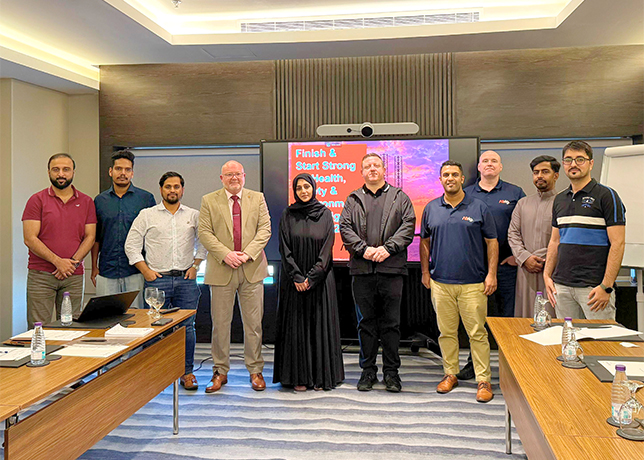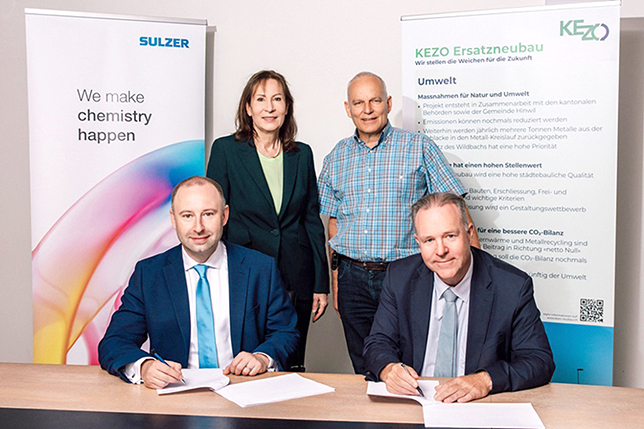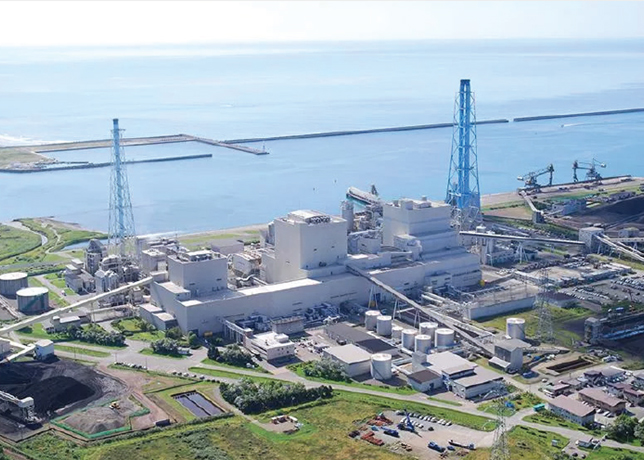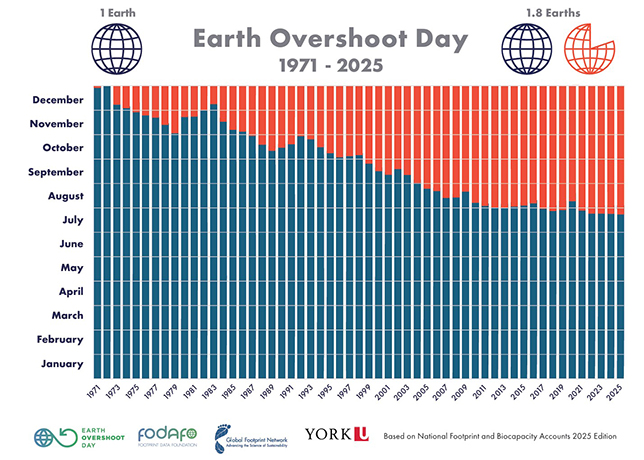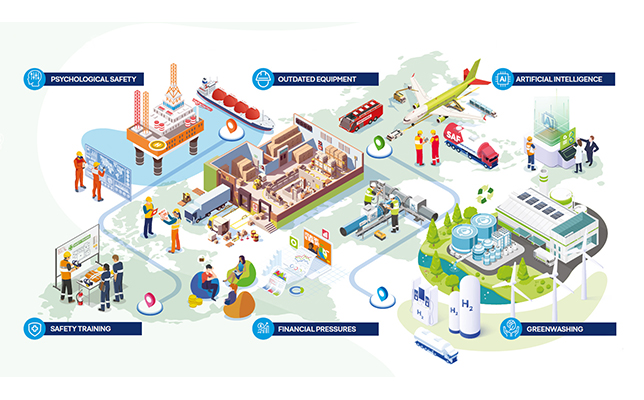
 SBTi's updated plans will help tackle emissions in certain sectors
SBTi's updated plans will help tackle emissions in certain sectors
To align with net-zero goals, SBTi is revising standards for oil, gas, chemicals, and power sectors, creating 1.5 deg C-aligned science-based targets and engaging stakeholders for practical, robust solutions
To tackle emissions in high-impact industries and align with its Corporate Net-Zero Standard, the Science Based Targets initiative (SBTi) is updating its terms of reference for three sector projects: oil and gas, chemicals and power.
The SBTi is a corporate climate action organisation that enables companies and financial institutions worldwide to play their part in combating the climate crisis.
These updates are essential to inform robust, practical and clear criteria, with input from external stakeholders shaping their development.
By prioritising sectors with the greatest potential to drive decarbonisation, the SBTi aims to equip businesses in high-emitting industries with science-aligned net-zero pathways.
OIL & GAS
Fossil fuel combustion and industrial processes account for 85 per cent of global CO2 emissions and 64 per cent of total greenhouse gas emissions.
A major contributor to these emissions is the oil and gas sector, which consists of companies active in the exploration, extraction, processing, transport, refinement, and marketing of crude oil, natural gas, and their subsequent products.
Oil and gas related operations contribute 15 per cent of global energy related emissions, excluding the indirect emissions from the use of sold products. A major portion of these emissions are leaks and releases of methane gas.
The oil and gas industry desperately needs a blueprint to decarbonise if humanity is to stop the most catastrophic impacts of climate change.
For this reason, the SBTi will develop a sector specific-standard for the oil and gas sector, that will establish the minimum criteria required for companies to set science-based targets that are aligned with a 1.5 deg C level of ambition.
SBTi’s Oil and Gas Standard will demonstrate how companies in this industry can decarbonise their business models, retain and attract financing and lead the energy transition.
The updated Terms of Reference for SBTi’s Oil and Gas Standard outlines key milestones in this development, which will be the first of its kind.
The Oil and Gas Standard will be open for use by organisations headquartered and with emissions and activities anywhere in the world that are active within the oil and gas sector.
There are a range of initiatives which map out the business model transitions that corporates will need to undertake to achieve their science-based targets, such as the Assessing low-Carbon Transition (ACT) initiative, the Race to Zero, the Transition Planning Taskforce (TPT) and the Transition Pathway Initiative (TPI).
Within the scope of the Oil and Gas Standard development, there are several organisations, which are relevant to the scope of the project, including but not limited to:
Transition Pathway Initiative, The Oil and Gas Methane Partnership 2.0 (OGMP 2.0), The Oil and Gas Climate Initiative (OGCI), The Carbon Tracker Initiative, The International Investors Group on Climate Change (IIGCC), and The Energy Transitions Commission (ETC).
The next major step is the release of a draft for public consultation early 2025, providing stakeholders with an opportunity to help shape the Standard.
A second public consultation, extended to 45 days in line with SBTi’s procedures will follow to inform rigorous stakeholder engagement and robust outcomes. A final version is expected in Q1 2026.
Expert input is especially vital for complex, high-impact sectors like oil and gas, where diverse perspectives help establish the minimum criteria for 1.5 deg C-aligned science-based targets.
CHEMICALS
Nearly all (95 per cent of) manufactured products rely on the chemicals sector. As such, it is the third highest industrial emitter worldwide, contributing to almost every sector of the global economy, including health care, agriculture, construction and renewable energy systems. It is also key to the plastics value chain.
Much of the chemicals value chain is based on the building blocks of carbon and hydrogen.
Today, the sector relies heavily on direct fossil-based hydrocarbon feedstocks (e.g. coal, natural gas, natural gas liquids) or feedstocks that are products of crude oil refineries (e.g. naphtha) for the source of these building blocks.
Value chain (Scope 3) emissions of the chemicals industry are substantial. The fate of the carbon embedded in chemical products must be considered down the value chain, where GHG emissions can occur either during the use phase or at the end-of-life via incineration or decomposition.
Additionally, N2O emissions generated from N-fertiliser application in the field presents a particular challenge for companies producing such fertiliser products.
The upstream emissions associated with the extraction and production of the fossil-based feedstocks and fuels, and their alternatives (including land-related and production emissions to obtain biomaterials, emissions from waste recycling processes, and to obtain CO2 for Carbon Capture and Utilisation processes), are just as critical.
For these reasons, the SBTi is developing target-setting criteria to outline criteria for chemical companies to set credible, ambitious, science-aligned climate targets, and to help decarbonise this sector.
The developed criteria will cover both near- and long-term target setting, and address all relevant GHGs.
Within the scope of Chemicals Sector Target-Setting Criteria development, the following organisations are relevant to the scope of the project: Transition Pathway Initiative, The International Investors Group on Climate Change (IIGCC), The ACT Initiative, and The Mission Possible Partnerships (MPP).
The project is currently undergoing a second round of public consultation and calling for chemicals sector companies to pilot the criteria. Submissions for both the consultation and the pilot testing are open until January 10th
The next major milestone for the criteria, as detailed in the updated Terms of Reference, is now expected to be the release of the final Chemicals Criteria in Q3 2025.
POWER
The power sector is the largest source of CO2 emissions globally. Global electricity demand is forecast to grow by around 4 per cent in 2024, up from 2.5 per cent in 2023.
The SBTi will establish more detailed applicability rules for companies engaged in electricity-related activities, in addition to traditional utilities, including companies that generate power for self-consumption, with sales only of surplus energy, or companies involved in trading of electricity only, without involvement in generation activities.
The SBTi is prioritising the development of the Power Sector Standard to take into account diverse types of power utilities and business models, including renewable companies and companies generating power from non-traditional fuels.
The detailed sectoral boundaries, applicable activities to be covered, and exclusions from the scope are still to be developed and will be described in the standard.
The Power Sector Standard development project includes the following deliverables:
• Power Sector Standard that contains minimum required criteria, recommendations and guidance for the companies operating in electric utilities and power generation to set 1.5°C-aligned science-based targets across scopes 1, 2 and 3.
• Power sector target-setting tool.
The updated Power Sector Standard Terms of Reference details the project plan. The next major milestone will be the release of the first public consultation draft in Q2 2025.
Each of these projects are being supported by expert advisory groups made up of representatives from business, civil society and academia. These groups meet regularly to provide specialised guidance and help ensure the final resources are both practical and ambitious. The participants in these groups can be found on the relevant sector page.
In addition to these sector projects, SBTi is also developing a Financial Institutions Net-Zero Standard and sector standards for automotive and apparel. The latest information can be found in our technical work program.
At the same time, the SBTi is updating its Corporate Net-Zero Standard and is focused on ensuring interoperability between its resources, so they can easily be used together to enable a smooth target-setting process for businesses.
By Abdulaziz Khattak






























